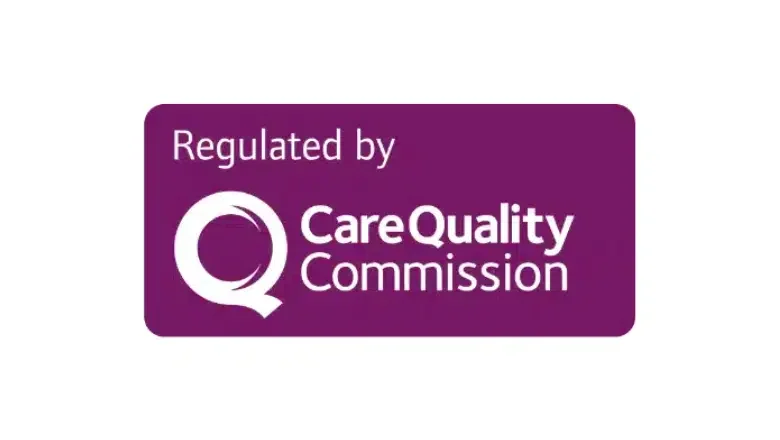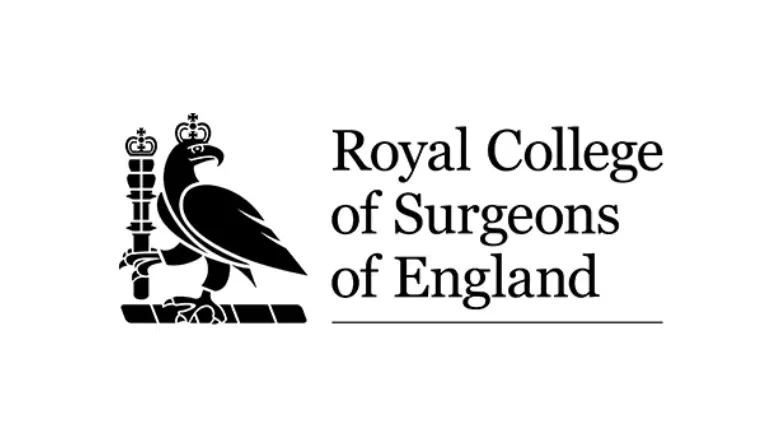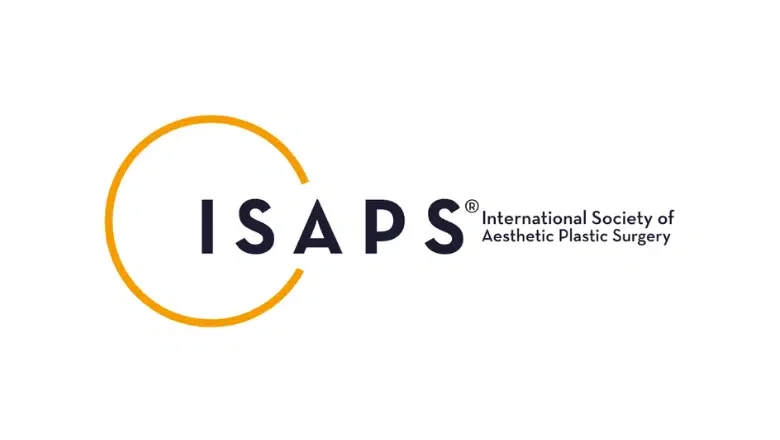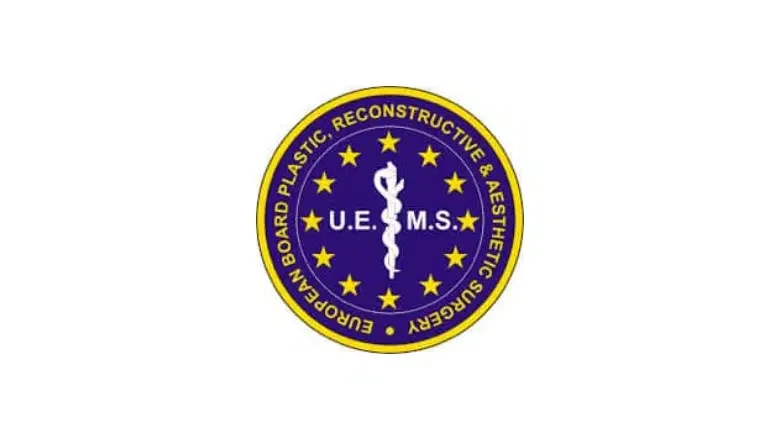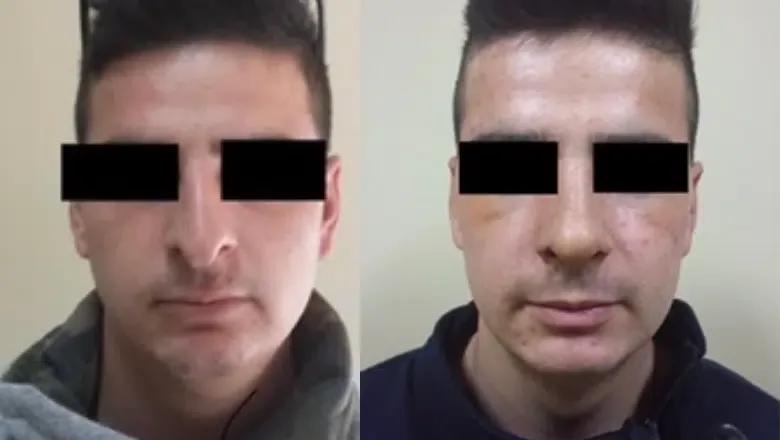
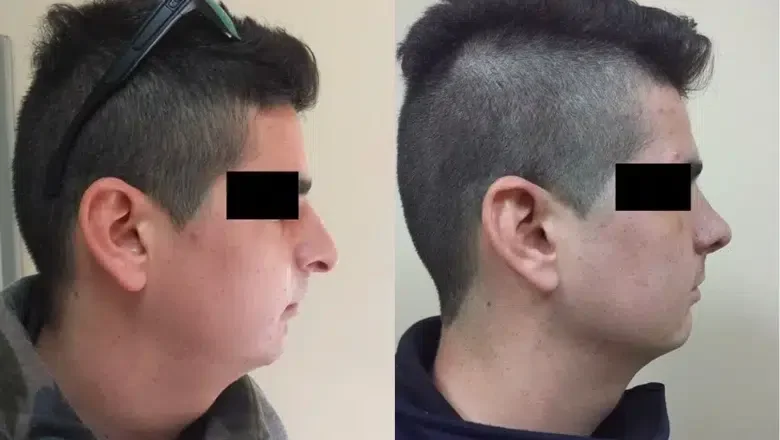
Septorhinoplasty is a surgical procedure that combines correction of nasal septum deviations with cosmetic changes to the external appearance of the nose.

Septorhinoplasty involves a combination of rhinoplasty and septoplasty to address a wide range of aesthetic and functional concerns affecting the nose. Septorhinoplasty surgery UK may be advised when you may be experiencing breathing difficulties because of septal deviation. Some patients may find their nostrils collapse inwards when breathing through the nose. These functional aspects can be corrected while improving the cosmetic appearance of the nose as part of a septorhinoplasty procedure. Cosmetic rhinoplasty surgery, also known as a nose job, is designed to alter the size and shape of the nose surgically. Tip plasty, nostril reduction, dorsal hump removal and nose reshaping are commonly performed as part of a rhinoplasty procedure. Rhinoplasty surgery is commonly used to reduce a wide nose, also known as a bulbous nose. Septoplasty, also known as nose septum surgery, is designed to address functional disturbances affecting the nose, including difficulty in breathing, sinus problems and persistent headaches. Septoplasty surgery is designed to correct a deviated septum to relieve airflow obstruction and improve breathing. ENT surgeons may also perform functional endoscopic sinus surgery, also known as FESS, in the same procedure for people affected by chronic or recurrent sinusitis and nasal polyps. Palate surgery may also be carried out to address snoring issues.
Septorhinoplasty is a combination treatment combining both aesthetic and functional correction of a wide range of abnormalities in nose anatomy or function. A deviated septum or septal deviation is remarkably common in the general population, with up to 80% of people experiencing problems with the position of the septum. Septorhinoplasty can correct a deviated septum at the same time as a rhinoplasty to eliminate the need for a separate procedure. This eliminates having to have a second recovery period and makes the overall costs of treatment much more affordable.
Septorhinoplasty is a surgical procedure that combines two distinct surgeries, septoplasty and rhinoplasty, to correct and enhance the functionality and appearance of the nose. This comprehensive treatment addresses issues within the nasal structure that can affect breathing, such as a deviated septum, while simultaneously refining the nose’s shape for aesthetic improvement.
At the heart of septorhinoplasty is septoplasty, a process focused on rectifying any deviations or issues with the nasal septum—the thin wall of cartilage and bone that divides the nostrils. A deviated, or misaligned, septum can lead to complications like breathing difficulties, chronic sinus infections, and snoring. Septoplasty aims to straighten this septum, ensuring a clear airway and improved nasal function.
Rhinoplasty, the other half of septorhinoplasty, is primarily concerned with the nose’s external appearance. It can involve reshaping the nose’s structure, reducing or increasing its size, altering the tip or bridge, or modifying the nostril’s width. The goal is to achieve a harmonious balance with the face’s other features, enhancing the individual’s overall facial aesthetics.
By combining these two procedures, septorhinoplasty offers a dual benefit: it alleviates the functional issues associated with a deviated septum and other internal nasal anomalies, and it refines the nose’s shape, size, and contours to better complement the patient’s facial structure. This integrated approach ensures that both cosmetic and health-related concerns are addressed, resulting in not only an improvement in the patient’s appearance but also in their breathing and overall quality of life.
RELATED: Cosmetic vs Functional Rhinoplasty
Patients considering septorhinoplasty often seek to address both cosmetic concerns and functional impairments in a single surgical session. This procedure is meticulously planned and executed by skilled surgeons specialising in facial plastic surgery, ensuring that the outcome meets the patient’s aesthetic desires while significantly improving nasal function.

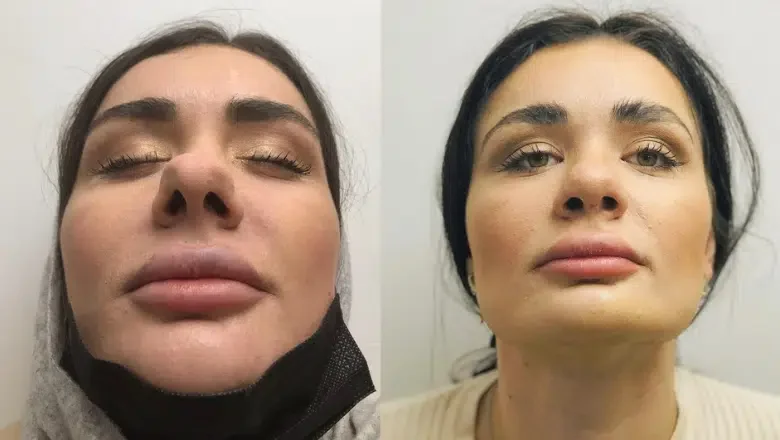
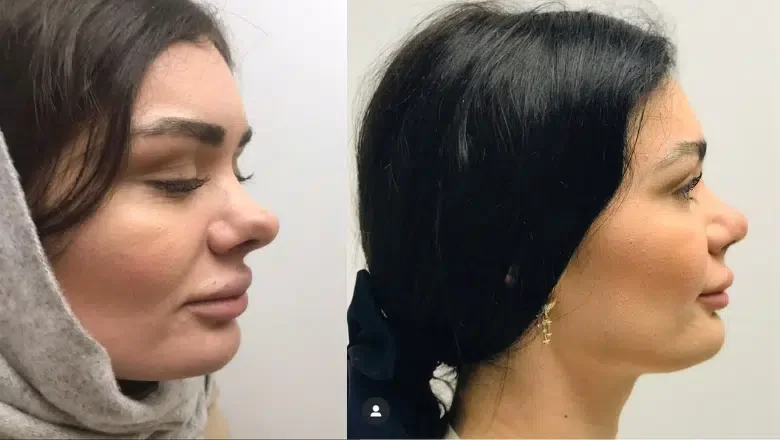


The benefits of this surgery can include the following:
Septorhinoplasty can be used to correct a variety of aesthetic issues, such as a hooked or bulbous nose, a crooked nose, or a nose that is too large or too small.
Septorhinoplasty can also be used to correct structural issues within the nose that are causing difficulty breathing. This can include a deviated septum, which is a condition in which the bone and cartilage that separates the nostrils are off-centre.
Many people who undergo septorhinoplasty report an improvement in self-confidence and self-esteem following the procedure.
A well-balanced and proportionate nose can improve overall facial harmony and make a person feel more attractive.
Septorhinoplasty can improve the quality of life of people who have difficulty breathing or chronic nasal congestion, sinusitis or other nasal-related issues.
Here is an on-table before and after of the profile of one of our septorhinoplasty patients:
Septo rhinoplasty is an advanced type of rhinoplasty procedure involving both aesthetic and functional correction of problems affecting the nose. Many people may have noticed they have difficulty breathing from a young age or have developed problems after sustaining a traumatic injury. People choose to have a septorhinoplasty procedure to address many nose problems, including:
The growth and development of the nose are generally complete by the ages of 16 to 18 in boys and 14 to 16 in girls. Patients should be aged 18 or over to be considered for septorhinoplasty surgery. Modern surgical techniques aim to preserve as much of the delicate nasal cartilage as possible. Many younger patients develop nasal airflow obstruction or significant deformities, and cartilage-sparing techniques allow surgery to be undertaken in young adults.
If you have a documented medical issue with your septum that requires surgery and also want to alter the appearance of your nose, combining the procedures into a septorhinoplasty is often the best option. This approach allows both concerns to be addressed in a single operation. It’s worth noting that having a septoplasty on its own to fix a medical problem can sometimes complicate a future rhinoplasty. Therefore, reshaping the entire nose during a single septorhinoplasty is generally preferable. This not only resolves functional issues with the septum but also improves the overall appearance of the nose at the same time.
Your surgeon will determine the most appropriate type of septorhinoplasty procedure, whether open or closed, at your consultation. A closed rhinoplasty involves all incisions being made inside the nostrils and may be suitable for mild surgical correction of septal deformities and changes in nose size and shape. In most cases, an open rhinoplasty technique will be needed to perform septorhinoplasty surgery. Open rhinoplasty involves an incision being made in the columella, which is the area of skin located between the nostrils. The incision has a zigzag shape to help minimise the appearance of the resulting scar. Septal cartilage is often required as a graft material to enhance the structure and function of the nose. Using septal cartilage as part of a septorhinoplasty allows correction of both septal deviation and improves the aesthetic appearance of the news. The nose requires proper structural support, and septal cartilage is the best material to help achieve this stability. Failing to use septal cartilage as structural support may result in noses beginning to droop with age.
RELATED: What is the difference between an open and closed rhinoplasty?
Although most septorhinoplasty procedures involve reducing the size of the nose, certain types of procedures may require augmenting the size of the nose, and this is particularly applicable for revision rhinoplasty and ethnic rhinoplasty. These types of surgeries often require cartilage graft material to be taken from the septal cartilage. In cases where the septal cartilage is absent from a previous rhinoplasty procedure, donor cartilage will need to be taken from the ear or the rib. Some surgeons may prefer to use synthetic graft material to avoid the pain, recovery and downtime that a rib cartilage graft often requires. As with all types of surgery, septorhinoplasty involves certain risks, which are minimised by selecting a reputable surgeon and clinic to perform your septo-rhinoplasty procedure.
Septorhinoplasty surgery may sometimes involve the need to have internal nasal packs inserted to stabilise the position of the septum. In most cases, our surgeons utilise advanced techniques to minimise their use, which helps reduce the post-operative discomfort experienced after surgery. Nasal tape, combined with an external splint, will be used to protect and stabilise the nose. The nasal splint will be removed at your one-week postoperative appointment.
RELATED: How long does it take to recover from nose job surgery?
In most cases, septorhinoplasty is a well-tolerated procedure. It is common to experience a congested feeling for the first few days after surgery. This will rapidly improve with time. The surgery is associated with little, if any, discomfort, as your surgeon will inject local anaesthetic during your surgery to minimise any postoperative discomfort. You will also be given a prescription for painkillers to help you stay comfortable and relaxed during the septorhinoplasty recovery period. It takes approximately 4 to 6 weeks for initial bruising and swelling to disappear. The appearance of the nose will continue to improve over the weeks and months after surgery. Final results after a septorhinoplasty can be expected approximately 12 months after the procedure. Residual rhinoplasty swelling may persist for up to 18 months after surgery, and in some cases, this can be improved with the injection of steroids. Every patient’s recovery will be different, and this will be determined by the extent of surgical correction required as well as the overall state of health including whether patients smoke or not during the postoperative period.
RELATED: How long does rhinoplasty swelling last?
We advise sleeping on your back propped up on a couple of pillows for the first few days after surgery. You should avoid strenuous exercise six weeks after surgery to reduce post-operative swelling. It is not considered harmful to blow your nose and may be recommended by your surgeon to help clear crusting after surgery. Our postoperative nurses can help to reduce crusting in the nose by irrigating the nose with sterile saline.
Recovery after septorhinoplasty, which is a combination of a deviated septum correction and a cosmetic nose job, can be uncomfortable, but it is typically not very painful. The extent of discomfort during the recovery period can vary depending on the extent of the surgery, the patient’s pain tolerance, and other factors. Here are some common experiences during the recovery period:
Most patients experience some degree of pain and discomfort following septorhinoplasty. However, this is usually well-controlled with prescription pain medication, which is often prescribed for the first few days following the procedure. The pain and discomfort typically subside over time, with most patients able to manage their discomfort with over-the-counter pain relievers within a week or two.
Swelling and bruising are common after septorhinoplasty, particularly around the eyes and nose. This can make it difficult to breathe through the nose or eat and drink comfortably for the first few days following the procedure. However, this usually resolves within the first week or two, and most patients are able to return to work or other activities within two weeks after surgery.
Following septorhinoplasty, the nasal passages may be congested and stuffy for a few days to several weeks. This can make it difficult to breathe through the nose, but is typically temporary and improves as the swelling and inflammation subside.
Most patients will need to limit their activity and avoid strenuous exercise or activities for at least two weeks following septorhinoplasty. This is to prevent complications such as bleeding or increased swelling. Patients should also avoid blowing their nose or getting the nasal packing or splints wet.
Follow-up appointments with the plastic surgeon are important during the recovery period to monitor healing and ensure that the patient is progressing as expected. The surgeon may remove any packing or splints from the nose within a week or two after the surgery and provide additional instructions for care and recovery.
Septorhinoplasty is a surgical procedure that combines a septoplasty (correction of a deviated septum) with a rhinoplasty (nose reshaping) to improve both the function and appearance of the nose. As with any surgical procedure, there are certain risks associated with septorhinoplasty.
As with any surgery that requires anaesthesia, there is a risk of complications related to the use of anaesthesia, such as allergic reactions, breathing difficulties, and blood clots.
There is a small risk of infection following septorhinoplasty. This risk can be minimised by following the post-operative care instructions provided by your surgeon.
Haematoma, or bleeding under the skin, can occur after septorhinoplasty. This can cause swelling and discolouration of the skin and may require additional surgery to correct.
Although most patients are pleased with the results of septorhinoplasty, in some cases, patients may be unhappy with the outcome of the surgery. This may require revision surgeries to correct.
In rare cases, septorhinoplasty can result in a loss of sense of smell. This is usually temporary and resolves with time, but in some cases, it can be permanent.
Septorhinoplasty is an invasive procedure, and it will leave scarring. Although the scarring is usually minimal and well hidden in the natural creases of the nose, in some cases, the scarring may be more visible.
Some patients may experience numbness or pain in the nose and face following septorhinoplasty. This is usually temporary, but in rare cases, it can be permanent.
The cost of a septorhinoplasty in London will vary depending on the extent of surgical correction required and your overall state of health. Once you have had a face-to-face consultation with a surgeon, you will be seen by your dedicated patient coordinator to give you a price quote. Your septorhinoplasty quotation includes your surgeon’s, anaesthetic, and facility fees. Your postoperative review appointments are also included as part of the overall cost of surgery.
Centre for Surgery is an approved provider of specialised medical finance in conjunction with Chrysalis Finance. We offer a wide range of flexible finance options, including 0% finance, to help you spread the repayments of your septorhinoplasty procedure.
RELATED: Finance Options
Nose surgery is generally considered to be one of the most complex types of surgery carried out on the face. It is, therefore, important to find a highly experienced Surgeon with many years of experience in carrying out both aesthetic and reconstructive surgery on the nose. Septorhinoplasty is a complex surgical procedure, and producing the best results requires a specialist rhinoplasty surgeon to perform it. This will help to minimise the requirement for a future revision procedure. When researching rhinoplasty surgeons in London, it is important to learn about your surgeon’s experience, training and reputation and how many rhinoplasty procedures they perform each year.
Our rhinoplasty surgeons are skilled in all types of surgical rhinoplasty, including septorhinoplasty. Optimal results should result in a well-balanced and natural-looking appearance that looks in harmony with your overall facial features. If you have been searching for a renowned expert in nasal surgery, look no further than Centre for Surgery to achieve your treatment goals at our state-of-the-art Baker Street clinic in Marylebone.
When considering septorhinoplasty in the UK, selecting a clinic that is known for its excellence, expertise, and empathetic patient care is crucial. Centre for Surgery, located in the heart of London, exemplifies these qualities, making it the premier choice for those seeking to improve both the functionality and aesthetics of their nose.
Our clinic is renowned for its state-of-the-art facilities, cutting-edge techniques, and a team of highly skilled surgeons specialising in facial plastic surgery. At Centre for Surgery, we understand that each patient’s needs and aspirations are unique. Therefore, we are committed to providing personalised care and bespoke treatment plans designed to achieve the best possible outcomes.
Patient Testimonials
“I underwent septorhinoplasty at Centre for Surgery, and the results have been life-changing. Not only has my breathing significantly improved, but the shape of my nose is exactly what I hoped for. The care and support I received from the team were exceptional.” – Sarah L.
“My experience with Centre for Surgery was outstanding from start to finish. The staff made me feel completely at ease, and my surgeon was incredibly knowledgeable, explaining every step of the process in detail. I couldn’t be happier with my new nose.” – James P.
“Choosing Centre for Surgery for my septorhinoplasty was the best decision I could have made. The professionalism and expertise of everyone involved were second to none, and the follow-up care was superb. I highly recommend them to anyone considering this procedure.” – Emily T.
Why Choose Us?
Our commitment to excellence is evident in every aspect of our practice, from the initial consultation to post-operative care. We pride ourselves on utilising the latest surgical techniques and technology to ensure optimal safety, comfort, and results for our patients.
For more detailed information about our philosophy and what sets us apart, please visit our About Us page.
Finance Options
We believe that financial considerations should not be a barrier to achieving your desired appearance. That’s why we offer a range of finance options, including 0% APR with Chrysalis Finance, making your septorhinoplasty journey more accessible and stress-free. Learn more about our finance options.
Additional Resources
To gain further insight into septorhinoplasty and other plastic surgery procedures, our plastic surgery blog is an invaluable resource, featuring articles, advice, and the latest developments in the field.
Clinic FAQs and Baker Street Clinic
For answers to frequently asked questions about cosmetic surgery and our clinic’s operations, visit our Clinic FAQs. Our Baker Street clinic in London is conveniently located for those in the UK seeking top-tier cosmetic surgery services. More information can be found on our Baker Street clinic page.
Book a Consultation
If you’re considering septorhinoplasty or wish to learn more about how we can help you achieve your aesthetic goals, we invite you to book a consultation with one of our expert surgeons. Contact us today at 0207 993 4849 or contact@centreforsurgery.com, and take the first step towards a more confident and comfortable you.
The first step of your patient journey for a septo-rhinoplasty involves having a detailed consultation with an expert rhinoplasty surgeon in London. As part of the consultation, your surgeon will take a detailed medical history, including any medicines he may be taking, followed by a physical examination to assess nasal symmetry and any deformities affecting the nose.
Your surgeon will explain what septorhinoplasty nose surgery involves and will determine your suitability for the procedure. The risks and benefits of the procedure will be discussed in detail, and you will be able to view before and after photos of patients who have had a similar procedure. In some cases, your surgeon may perform computerised image mapping of your nose to plan the procedure and to help you form realistic expectations of what the procedure can achieve.
Septorhinoplasty nose correction is carried out under a general anaesthetic as a day case which means you will be able to go home later the same day once you have recovered from the effects of the anaesthetic.
You will be given a prescription for painkillers to ensure you are as comfortable as possible during recovery. Your surgeon may recommend you apply sterile saline spray each day. When you are reviewed at one week, your nasal splint will be removed, and any internal nasal crusting will be gently removed. There is often minimal bruising, which will usually disappear in two weeks.
You should start to see the final results of nose surgery six weeks after the procedure. The results will continue to improve in the months after the procedure, with final results expected at 12 months. Any residual swelling affecting the tip of the nose can be improved with steroid injection.
